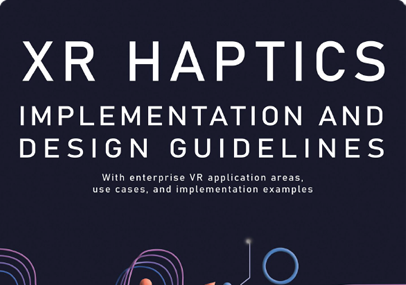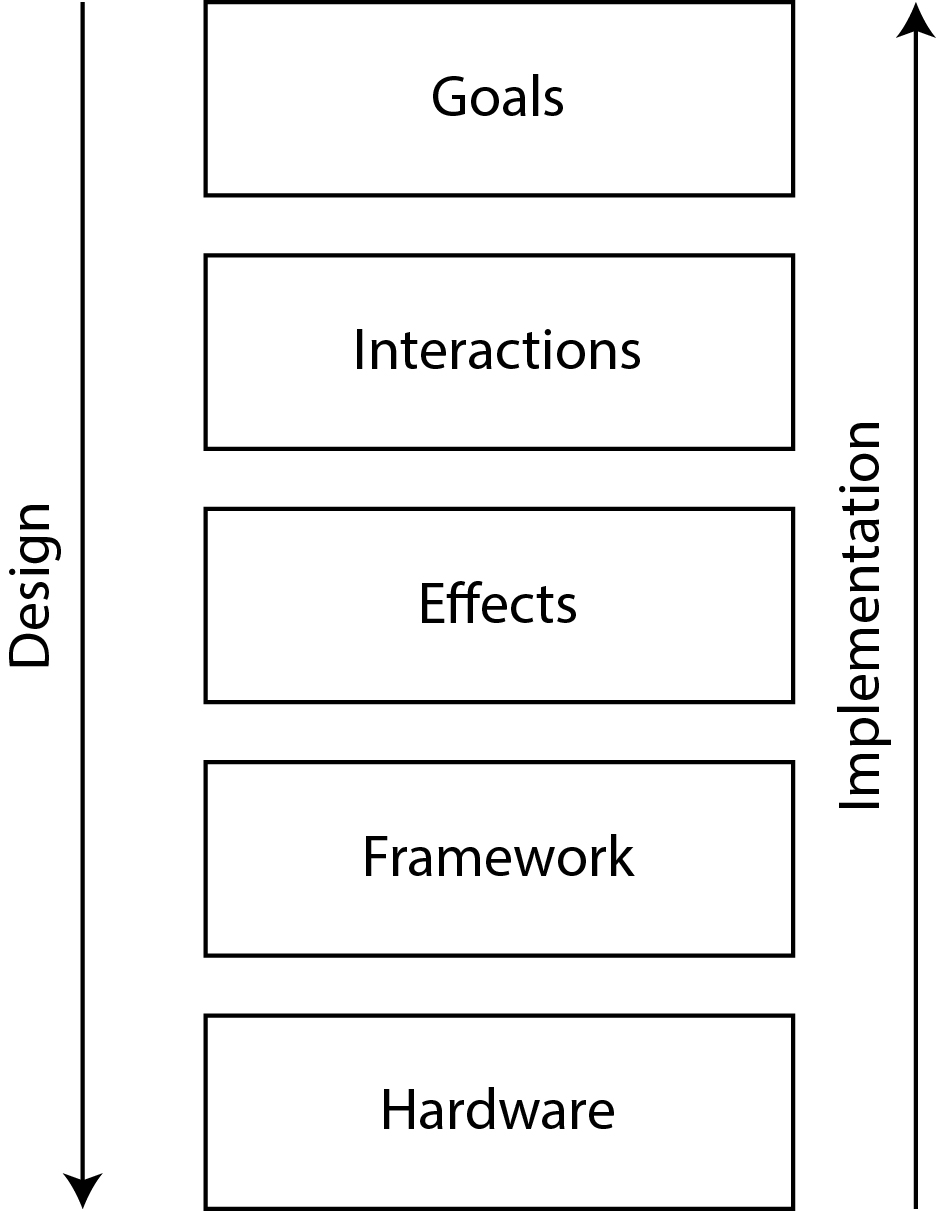

The book, ‘Haptics in XR: Design and Implementation’ is the result of hundreds of hours of interviews, discussions and pooling of knowledge of the four co-authors and their networks of expert colleagues, academics and industrial collaborators. The book is truly a practical guide whose audience is all practitioners responsible for planning, designing and implementing an XR experience that includes meaningful haptics.
For the designer and implementor, the book contains a detailed summary of the basic objectives that can be achieved with haptics, the enabling mechanics for haptic interaction, algorithm tips, hardware selection and effect design.
For the planner, the book also contains a complete worked example of planning for and designing haptics in a practical example.
Finally, the book contains a thorough overview of real-world use cases with detailed discussion of the value case for haptics and the technology selection thought process.

First and foremost, this book is a pragmatic guide designed to enable real-world outcomes. It includes a step-by-step guide for implementers to approach the implementation of haptics in their scenario in a controlled way with clear milestones, deliverables, and risks along the way. Even if the process suggested by this book is not strictly followed, the basic guidelines provided about haptic development may be utilized throughout the implementation process to achieve a more successful outcome.
The approach outlined in this book aims to provide a global taxonomy of the so-called “Haptics-Interaction problem” in extended reality. Implementers tasked with developing and integrating haptics into an XR project will find the section-by-section guide for the haptics-specific implementation, along with decisions, deliverables, and risks for each step. Implementers should start with the workflow proposed in Part 1 and dive into the details of each step in Chapters 4 through 12.
In Part 2, Product and Program managers will find XR use cases in which haptics are known to provide meaningful value. A selection of real-world case studies is presented in Chapters 13 and 14.
Tips from world-class haptics experts are inserted throughout the book. These serve to guide the reader with concise rules of thumb that were learned from years of experience developing haptic technology. The effort has been made to illustrate essential concepts with diagrams and references to external resources.
The reader is encouraged to approach this book first and foremost from a design perspective. A key challenge for haptic experiences is that certain decisions are costly and expensive to recover from. For this reason, careful design and planning are needed before a single decision is made. The effort should be primarily driven by carefully constructed goals which imply interactions, haptic effects and ultimately software and hardware choices. This is illustrated in Figure 1 below and readers are strongly advised not to skip steps and not to start implementation prematurely.


